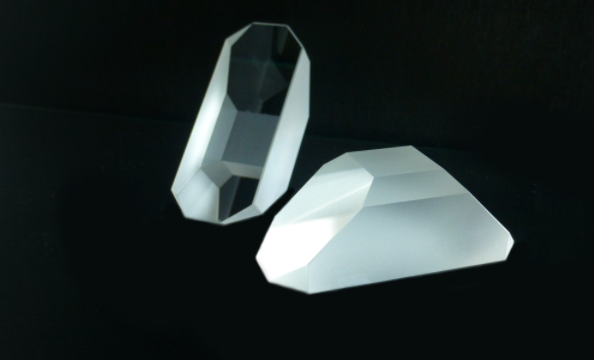ISO9001 Certified Professional Manufacturer & Supplier of Optics
+86-0431-87911611 admin@ytoptics.com
Contact us
-
 Email: admin@ytoptics.com
Email: admin@ytoptics.com
-
 Tel:86-0431-87911611
Tel:86-0431-87911611
-
 Add: 2# Automotive Innovation
Add: 2# Automotive Innovation
Jilin Province, China
Changchun Yutai Optics Co., Ltd.
Home > Products > Prisms > Roof Prisms

Optical BAK4 Roof Prism
BAK4 (Barium Crown Glass 4) is a high-end optical material used in the manufacture of roof prism, which is widely used in binoculars, microscopes and other precision optical instruments. Compared with the common BK7 glass, BAK4 has a higher refractive index and better optical properties, which can significantly improve the image quality.
Share this:
| BAK4 Material Properties | |
| Parameter | BAK4 |
| Refractive Index (nd) | 1.5688 (@587.6nm) |
| Abbe Number (vd) | 56 |
| Transmittance | Better than BK7 (especially near UV) |
| Critical Angle of Total Reflection | Smaller (reduced fringe light loss) |
| Cost | Relatively high (about 2-3 times of BK7) |
| How do I choose the material for roof prism? | ||
| Parameter | Influence | Preferred Materials |
| Refractive Index (nd) | Determines the critical angle of total reflection and influences the design of the light path | BAK4 > BK7 |
| Abbe Number (vd) | Dispersion control, affecting color difference | FK51 > BAK4 > BK7 |
| Transmittance | UV/VIS/IR applications | Fused silica (broadband) |
| Cost | Economy of mass production | BK7 (low-end), BAK4 (mid-end) |
| Environmental Stability | Temperature/Humidity/Shock Resistance | Fused silica (extreme environments) |
What are the advantages and disadvantages of the BAK4 roof prism?
Advantages:
Higher refractive index, reduce light loss, brighter imaging.
No edge cutting, more uniform field of view.
Suitable for high-end optical equipment, such as stargazing, hunting, military use.
Disadvantages:
Higher cost (2-3 times more expensive than BK7).
Lower Abbe number, need to rely on coating to optimize chromatic aberration.

TALK TO US 86-0431-87911611
86-0431-87911611
Call us now!
 86-0431-87911611
86-0431-87911611Call us now!
ONLINE CHAT
 2433808388
2433808388

